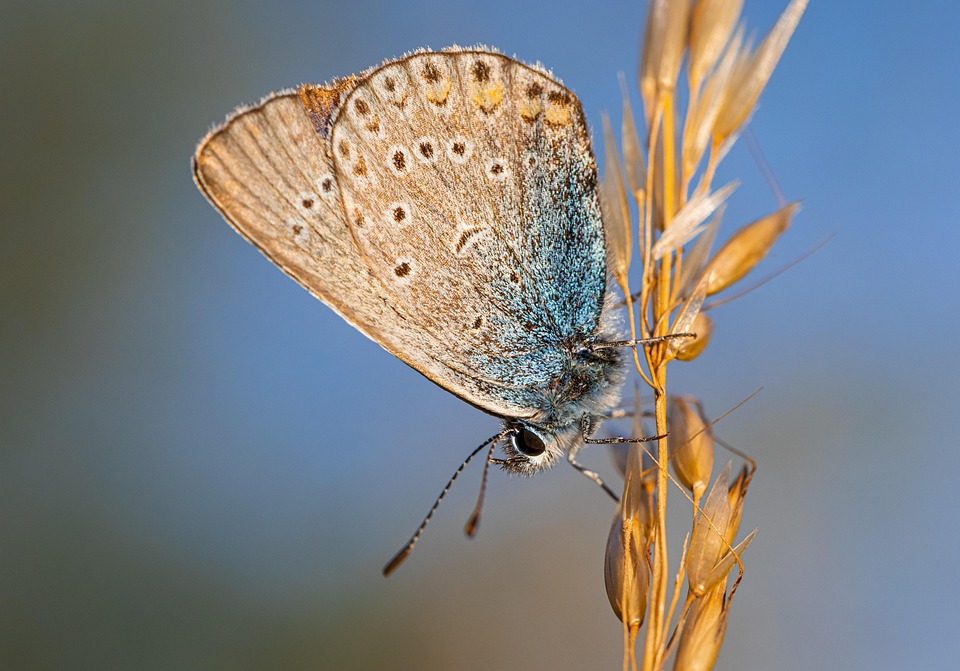Bizarre Biology: Uncommon Reproductive Strategies in the Animal Kingdom
The animal kingdom is replete with fascinating behaviors and adaptations, but few are as intriguing as the varied reproductive strategies that species employ to ensure the continuation of their lineage. From the bizarre mating rituals of certain amphibians to the unconventional gestation of some fish, the diversity of reproductive methods reflects a complex interplay between environment, evolutionary pressures, and individual species’ needs.
1. The Wide World of Reproductive Strategies
Reproductive strategies in the animal kingdom can generally be categorized into two main types: r-strategy and K-strategy. These strategies influence how species reproduce and care for their offspring.
R-strategy is characterized by high reproductive rates, with species producing a large number of offspring but providing little parental care. This strategy is often observed in fish, insects, and amphibians. An example is the spawning behavior of salmon, which produces thousands of eggs, most of which will not survive to maturity.
In contrast, K-strategy involves fewer offspring and a greater investment in parental care. Species such as elephants and humans follow this method, focusing on nurturing a small number of young to adulthood. The trade-off between quantity and quality is integral to survival across varying ecosystems.
2. Uncommon Reproductive Methods
While most animals utilize the standard methods of external or internal fertilization, numerous species have developed unique reproductive strategies that defy classification into traditional categories. Below, we will explore some of the most bizarre reproductive strategies found in the animal kingdom.
2.1. Seahorses and Their Role Reversal
One of the most famous examples of unconventional reproduction is seen in seahorses (Hippocampus spp.). In this species, it is the males that become pregnant. The female seahorse deposits her eggs into the male’s brood pouch, where he fertilizes them and carries them until they hatch.
The role reversal in seahorses raises intriguing questions about parental investment and gender roles. The male’s ability to carry and nurture the developing embryos allows for greater survival rates of young in an environment where predation is high. Employing this strategy reflects an adaptability that has enabled seahorses to thrive in diverse habitats ranging from coral reefs to estuaries.
2.2. The Praying Mantis and Sexual Cannibalism
Sexual cannibalism is an uncommon yet dramatic reproductive strategy most notably employed by the praying mantis (Mantidae family). In many species, the female will consume the male after or even during mating.
This behavior has puzzled researchers for years. One hypothesis suggests that the act of cannibalism provides nutritional benefits that can enhance reproductive success. Females that consume their partners may produce more eggs, due to the additional protein and nutrients gained. This extreme form of sexual selection illustrates the lengths to which animals will go in their reproductive strategies, challenging traditional notions of mate selection and investment.
2.3. Brood Parasitism in Cuckoos
Brood parasitism is a reproductive strategy where one species lays its eggs in the nests of another species, thereby offloading the parental care to unsuspecting host parents. The common cuckoo (Cuculus canorus) is a prime example of this behavior.
Cuckoo females carefully select the nests of other birds and lay their eggs therein, often mimicking the host’s eggs to avoid detection. The host birds, unaware, raise the cuckoo chick, which often grows at an accelerated rate and may evict or consume the host’s own offspring. This parasitic relationship highlights the complexities of evolutionary strategies and the arms race between parasites and their hosts.
2.4. The Naked Mole Rat and Eusociality
The naked mole rat (Heterocephalus glaber) presents another unusual reproductive strategy: eusociality. This species lives in colonies that operate with a social structure akin to that of bees or ants, where only a single female (the queen) reproduces, while workers undertake all other tasks such as foraging and defending the colony.
The high degree of social cooperation in naked mole rats allows for efficient resource management and protection from predators. The role of the queen is paramount, as her reproductive success dictates the survival of the colony. Eusociality in naked mole rats exemplifies how social structures can evolve to optimize reproductive success.
2.5. The Surinam Toad’s Unique Brooding
The Surinam toad (Pipa pipa) exhibits a highly unconventional method of reproduction involving brooding. After the male finds a mate, he fertilizes the female’s eggs, which are then embedded in the grooves of her back. The eggs develop beneath her skin, forming small pockets where the tadpoles emerge once they are fully developed.
This strategy provides a high level of protection for the developing young, as they are shielded from predators and environmental dangers. This form of parental investment exemplifies an evolutionary path that leverages physiological adaptations for reproductive success.
2.6. The Male Seahorse and the Pregnancy Process
While seahorses were introduced earlier, a deeper examination of their unique pregnancy process reveals additional complexities. Male seahorses experience specific hormonal changes during pregnancy, which influence their bodily functions, including nutrient transfer to the embryos.
Pregnant male seahorses can carry up to 2,000 eggs, depending on species, and they experience contractions similar to those of mammals during labor. The male’s role not only challenges traditional gender norms but also indicates a remarkable evolutionary adaptation to enhance offspring survival in aquatic environments.
2.7. The Wood Frog’s Freeze Tolerance
The wood frog (Lithobates sylvaticus) has developed an extraordinary reproductive strategy tied to its ability to survive freezing temperatures. During the winter months, wood frogs can freeze solid, entering a state of suspended animation. When spring arrives and temperatures rise, they thaw and resume their normal physiological activities, including reproduction.
This freeze tolerance allows wood frogs to inhabit areas that would be inhospitable to other amphibians. Their ability to synchronize breeding with the seasonal thaw reflects a complex adaptation to environmental challenges and serves to maximize reproductive success despite harsh conditions.
2.8. The African Cichlid and Mouthbrooding
African cichlids (families Cichlidae) exhibit a fascinating reproductive method known as mouthbrooding. After fertilization, the female cichlid gathers her eggs in her mouth, where they develop until hatching. This strategy not only protects the eggs from predators but also ensures a high level of care during the early stages of development.
Different species exhibit variations in this method. Some cichlids may even carry their fry in their mouths for several weeks after hatching, further emphasizing the degree of parental care invested in offspring. This form of reproduction highlights the intricate relationships between reproductive strategies and ecological pressures.
2.9. Parthenogenesis in the Whiptail Lizard
Parthenogenesis is a reproductive strategy where females produce offspring without fertilization by a male. The whiptail lizard (Cnemidophorus spp.) is a prominent example of this phenomenon, with populations consisting entirely of females.
Whiptail lizards engage in behaviors that mimic copulation, even though no males are present. This "pseudo-copulation" can stimulate ovulation and result in the successful production of offspring. This form of asexual reproduction highlights the adaptability of species in environments where mates may be scarce, allowing for continued population growth despite the absence of males.
2.10. The Darwin’s Frog and Male Parental Care
Darwin’s frog (Rhinoderma darwinii) embodies another extraordinary reproductive strategy through male parental care. After the female lays her eggs, the male engulfs them in his vocal sac, where they develop until reaching the tadpole stage. The male eventually releases the tadpoles into suitable water sources, thus protecting them from harm during their early life stages.
This unique method showcases the diverse roles males play in reproduction, contradicting the traditional perception that males contribute little beyond sperm donation. The male Darwin’s frog’s investment in nurturing the next generation underscores the evolutionary pressures that shape parental behaviors.
3. Evolutionary Implications of Bizarre Reproductive Strategies
The variety of reproductive strategies found in the animal kingdom serves as a testament to the adaptability of life. Each method reflects the specific ecological niches and evolutionary pressures faced by the species employing it. Understanding these strategies provides insight into the broader concepts of evolution, such as sexual selection, natural selection, and the delicate balance of ecosystems.
3.1. The Role of Environment in Shaping Reproductive Strategies
Environmental factors play a critical role in determining which reproductive strategies are successful. In environments where resources are scarce or predation is high, species may adopt methods that maximize offspring survival and reduce parental investment. Conversely, in stable environments with ample resources, species may invest more in fewer offspring, emphasizing parental care.
The diversity of reproductive strategies serves to illustrate the principle of niche specialization. Each species’ method reflects adaptations tailored to their surroundings, showcasing the intricate connections between environment and behavior.
3.2. Sexual Selection and the Evolution of Bizarre Traits
Many of the uncommon reproductive strategies discussed are the result of sexual selection, a type of natural selection where individuals with certain traits have enhanced chances of attracting mates. This can lead to the evolution of elaborate courtship displays, extreme sexual dimorphism, and, in some cases, bizarre reproductive behaviors, such as sexual cannibalism in praying mantises.
Sexual selection emphasizes the role of mate choice in shaping reproductive strategies. Traits that may seem maladaptive in other contexts can confer advantages in the mating sphere, leading to the evolution of increasingly intricate behaviors and adaptations.
4. Conclusion
The animal kingdom is a rich tapestry of reproductive strategies, from the bizarre to the extraordinary. These strategies reflect the complexities of evolutionary pressures, environmental adaptations, and the intricate balance of ecosystems. By studying these uncommon methods of reproduction, we gain a deeper understanding of the resilience and ingenuity of life on Earth.
Ultimately, as we continue to explore the diverse reproductive strategies found in the animal kingdom, we are reminded of the beauty and complexity of nature’s adaptations, challenging our perceptions of survival, gender roles, and parental investment. As research progresses and new species are discovered, we can only anticipate what additional wonders the natural world may reveal.
References
- Allen, J.A. (2020). Eusociality in Naked Mole-Rats: Unpacking the Social Structure. Journal of Evolutionary Biology.
- Baird, A.B. (2015). Parasitism as a Reproductive Strategy: The Case of the Common Cuckoo. Animal Behavior.
- Blumer, L.S. (2017). Mating Strategies and Parent Investment in Seahorses: A New Perspective. Marine Biology.
- Dawkins, R. (2006). The Selfish Gene: A New Perspective on Evolution. Oxford University Press.
- Hurd, L.E. & Tudge, C. (2019). The Function of Sexual Cannibalism in Praying Mantises. Behavioral Ecology.
- Janzen, D.H. (2018). The Ecology of Brood Parasitism: An Overview. Ecology Letters.
- McGhee, G.R. (2019). The Evolution of Reproductive Strategies. Biological Reviews.
- Stinson, S.C. (2021). Freeze Tolerance in Wood Frogs: An Adaptation to Environmental Challenges. Journal of Herpetology.
- Thomas, R.C. (2018). Mouthbrooding Behavior in African Cichlids: A Case Study. Journal of Fish Biology.
- Whittingham, L.A. (2016). The Evolution of Asexual Reproduction in Whiptail Lizards. Adaptive Strategies in Evolutionary Biology.
This article offers a comprehensive exploration of the unusual reproductive strategies in the animal kingdom, showcasing the diversity of approaches species have developed to thrive and survive. The study of these methods not only enhances our understanding of animal behavior but can also inform conservation efforts and strategies for preserving biodiversity in an ever-changing world.


























Add Comment